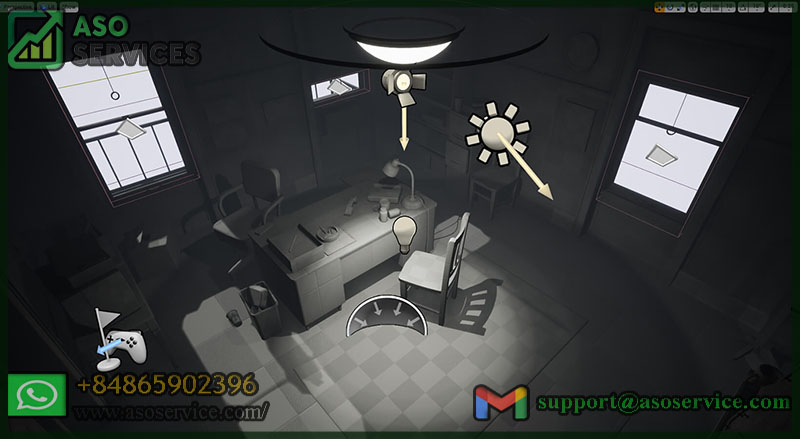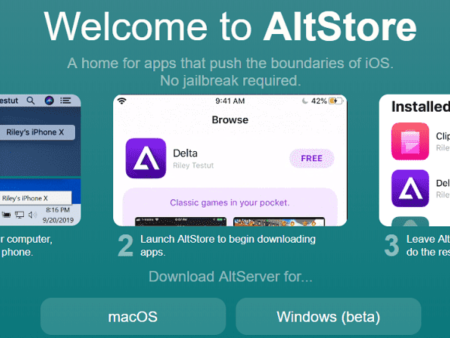Unreal Engine is a powerful game development engine used by professionals and beginners alike to create immersive games and interactive experiences. This guide will provide a comprehensive overview of Unreal Engine development, covering everything from the basics to advanced techniques.
Related posts
Top Best Action Mobile games 2023 on Google Play and App Store
The best ways to increase revenue for App Developers
1. Getting Started with Unreal Engine Development
Getting started with Unreal Engine development can seem daunting at first, but it's an incredibly rewarding process. Here are some key steps to help beginners get started:
Install and Set Up Unreal Engine: The first step is to download and install Unreal Engine on your computer. This can be done through the Epic Games Launcher.
Understand the User Interface: Once Unreal Engine is installed, it's important to become familiar with the user interface. This includes the main editor window, toolbar, and content browser.
Create a New Project: With the user interface understood, it's time to create a new project. This involves choosing a project template and configuring project settings.
By following these initial steps, beginners can start exploring the features and capabilities of Unreal Engine and begin their journey toward creating high-quality games and interactive experiences.
2. Unreal Engine Development Basics
Unreal Engine Development Basics refers to the foundational elements of the Unreal Engine game development environment. These basics include Actors and Components, Materials and Textures, and Animations and Physics.
Actors and Components are the building blocks of an Unreal Engine game. Actors are game entities, such as characters or objects, while Components are parts of an Actor, such as a weapon or a light source. These can be manipulated and customized through the Blueprint scripting system, allowing developers to create dynamic and interactive gameplay elements.

Unreal Engine Development Basics, Source: Asoservice.com
Materials and Textures are key to creating immersive and realistic environments. Materials define how surfaces interact with light and other environmental factors, while textures are the visual images applied to these surfaces. The Unreal Engine provides an extensive library of materials and textures, and developers can also create their own custom assets. It's important to get app reviews, collect and analyze user feedback; and act on insights to make data-driven improvements to your app.
Animations and Physics are essential for creating realistic and engaging gameplay experiences. The Unreal Engine features an advanced animation system that allows for realistic movement and actions of characters and objects.
3. Level Design and World Building
Level Design and World Building are critical aspects of creating immersive and engaging games using the Unreal Engine. These tasks involve creating and customizing environments, lighting, and shadows and adding effects and particles.
Creating and Customizing Environments: Level Design involves creating the playable environment where the game takes place. The Unreal Engine provides a range of tools to create and customize environments, such as terrain sculpting tools, foliage systems, and modular asset creation. Developers can also import assets from external 3D modeling software.
Lighting and Shadows: Lighting and shadows play a crucial role in setting the mood and atmosphere of a game. The Unreal Engine provides a robust lighting system, including dynamic lighting and light maps. Developers can customize lighting and shadows using tools such as light sources, post-processing effects, and volumetric fog.
Adding Effects and Particles: Effects and particles are used to enhance the visual experience of the game. These can be used to simulate environmental conditions such as rain or snow or to create explosions, sparks, and other visual effects. The Unreal Engine features a powerful particle system that allows developers to create complex effects with ease.
By mastering the tools and techniques of Level Design and World Building, developers can create stunning and immersive game environments using the Unreal Engine.
4. Game Mechanics and Interactivity
Game Mechanics and Interactivity refer to the design and implementation of gameplay elements that provide the foundation for engaging and enjoyable games. These elements include player controls, game rules, artificial intelligence, and game feedback.
Player Controls: Player controls are the means by which players interact with the game. The Unreal Engine provides a range of options for player controls, including input management, camera controls, and character movement. Developers can also customize these controls to suit the specific needs of their game.
Game Rules: Game rules determine how the game progresses and how players interact with the game world. These include elements such as objectives, win-and-lose conditions, and scoring systems. Game rules should be designed to be challenging but not frustrating and should encourage players to continue playing.
Artificial Intelligence: Artificial Intelligence (AI) refers to the ability of non-player characters (NPCs) to act independently and make decisions based on the game environment and player actions. The Unreal Engine provides tools for creating AI behaviors, including behavior trees and blackboard systems. These tools can be used to create realistic and challenging NPCs that enhance the gameplay experience.
Game Feedback: Game feedback refers to the ways in which the game communicates with the player. This includes visual and audio feedback, such as sound effects and on-screen messages, as well as haptic feedback through vibration or force feedback. Effective game feedback should provide clear and immediate responses to player actions, enhancing the player's sense of agency and control.
By designing and implementing engaging and intuitive gameplay mechanics and interactivity, developers can create games that are both fun and challenging, keeping players engaged and invested in the game experience.
5. Advanced Unreal Engine Development Techniques
Advanced Unreal Engine development techniques refer to the use of advanced features and tools in the Unreal Engine to create more complex and sophisticated games and interactive experiences. Here are some techniques commonly used by experienced Unreal Engine developers:
Blueprint Scripting: Blueprint scripting is a visual scripting system in the Unreal Engine that allows developers to create complex game logic without writing any code. Advanced users can leverage Blueprint scripting to create complex systems such as AI behavior, animation systems, and game rules.
Materials and Shaders: Materials and shaders are used to create realistic textures, lighting, and special effects in the game world. Advanced developers can create custom materials and shaders to create unique visual effects and improve the game's overall visual fidelity.
Optimization Techniques: Optimizing game performance is essential for creating games that run smoothly and provide an enjoyable experience for players. Advanced developers can use techniques such as Level of Detail (LOD) management, occlusion culling, and multi-threading to optimize ASO for their games for maximum performance.
VR Development: The Unreal Engine includes powerful tools for creating virtual reality (VR) experiences. Advanced developers can use these tools to create immersive VR games and applications that take full advantage of the latest VR hardware.
Multiplayer Networking: Multiplayer networking is a complex and challenging area of game development. Advanced developers can use the Unreal Engine's built-in networking tools to create robust and reliable multiplayer games, with support for a variety of network topologies and protocols.
By mastering these advanced Unreal Engine development techniques, developers can create games and interactive experiences that push the boundaries of what's possible in the world of game development.
6. Testing and Deployment
Testing and deployment are critical aspects of Unreal Engine development that ensure the game or interactive experience is polished and ready for release. Here are some testing and deployment practices that Unreal Engine developers commonly follow:
Testing: Developers should thoroughly test their games to ensure that they are free of bugs and glitches. This includes functional testing to ensure that all features work as expected, performance testing to ensure that the game runs smoothly on a variety of hardware configurations, and user testing to gather feedback and improve the overall user experience.
Optimization: Optimization is critical to ensure that the game runs smoothly and provides an enjoyable experience for players. Developers should use profiling tools to identify performance bottlenecks and optimize their games to run at a consistent framerate. Or you can buy ASO services to help in developing your apps.
Build Management: Developers should use a version control system such as Git to manage their game's source code and assets. This allows multiple team members to work on the same project simultaneously and makes it easy to roll back to previous versions of the game if necessary.
Distribution: Once the game is ready for release, developers need to package and distribute it to players. This can be done through digital distribution platforms such as Steam or the Epic Games Store or through physical distribution channels such as retail stores.
Post-Release Support: After the game is released, developers should continue to support it with bug fixes, performance optimizations, and new content updates. This helps to keep players engaged and can lead to increased revenue through DLC sales and other in-game purchases.
By following these testing and deployment practices, Unreal Engine developers can ensure that their games and interactive experiences are polished, optimized, and ready for release.
Conclusion
n conclusion, mastering the skills of Unreal Engine development can open up a world of possibilities for building high-quality games and interactive experiences. By following the key principles and techniques discussed in this guide, developers can create immersive and engaging experiences that captivate players and leave a lasting impression.
Related posts
https://asoservice.com/optimize-aso
https://asoservice.com/macos-app-reviews-ratings
Thanks so much for reading this article.
Source: https://asoservice.com/














Leave a Reply
Your e-mail address will not be published. Required fields are marked *